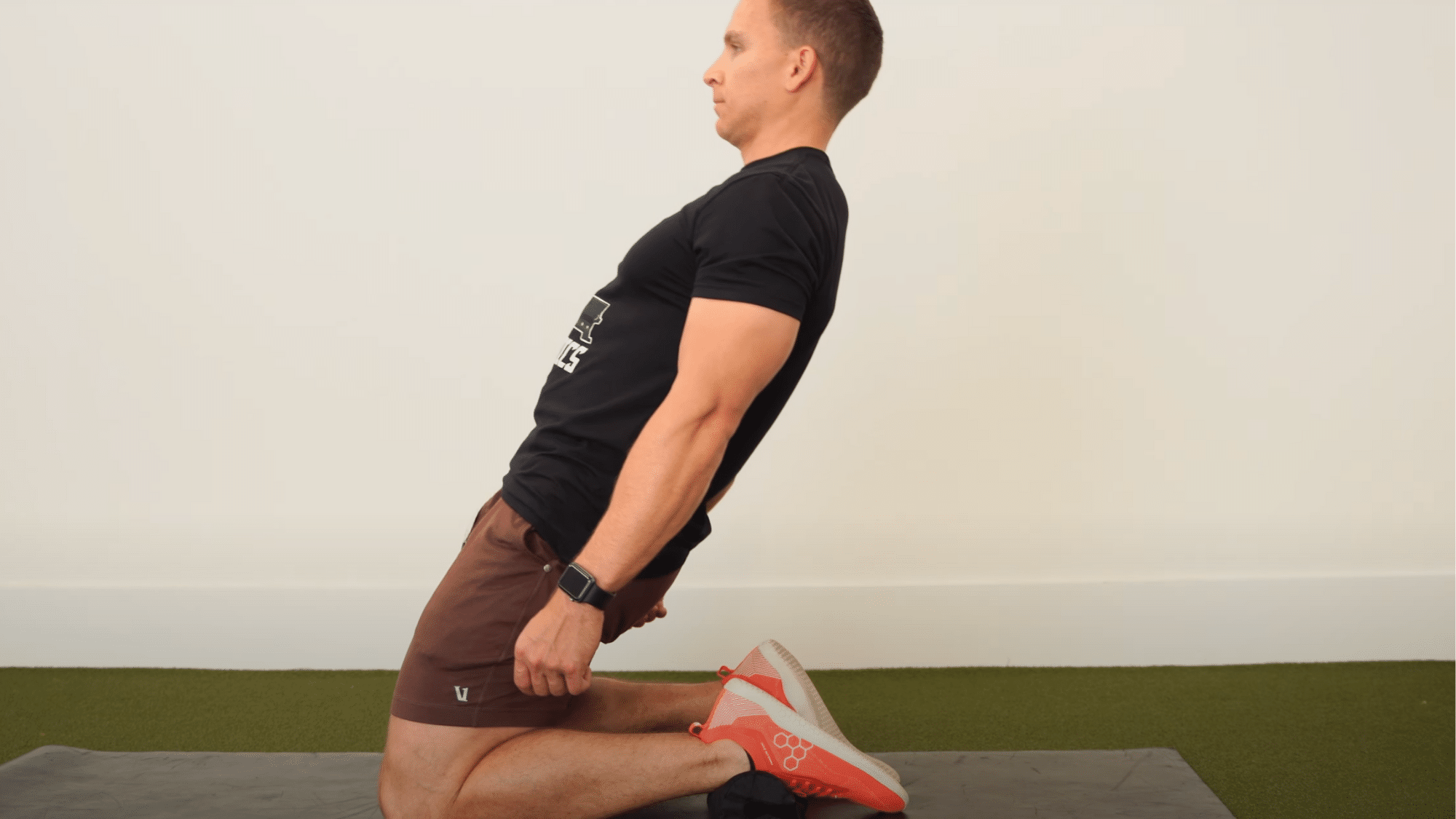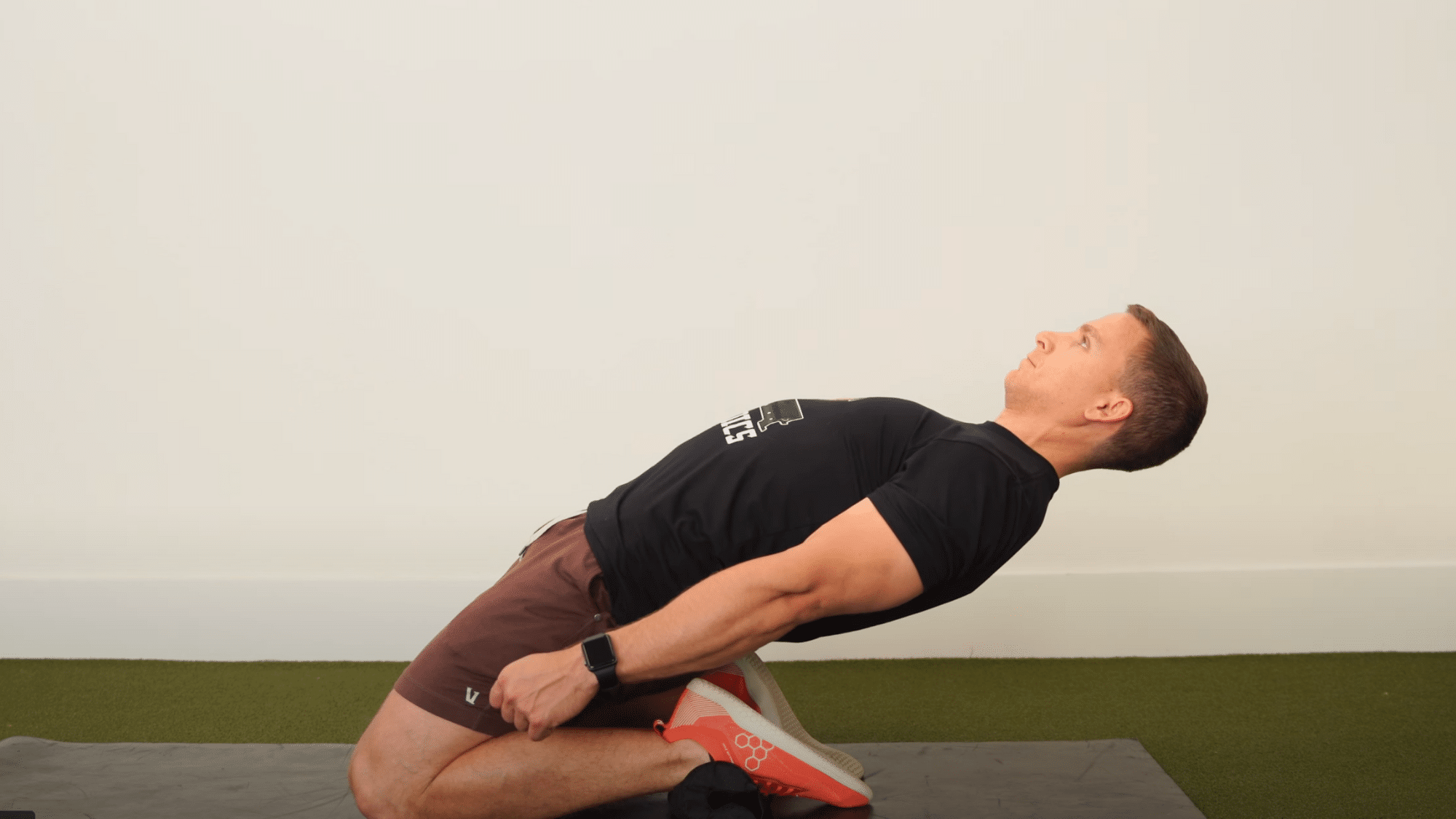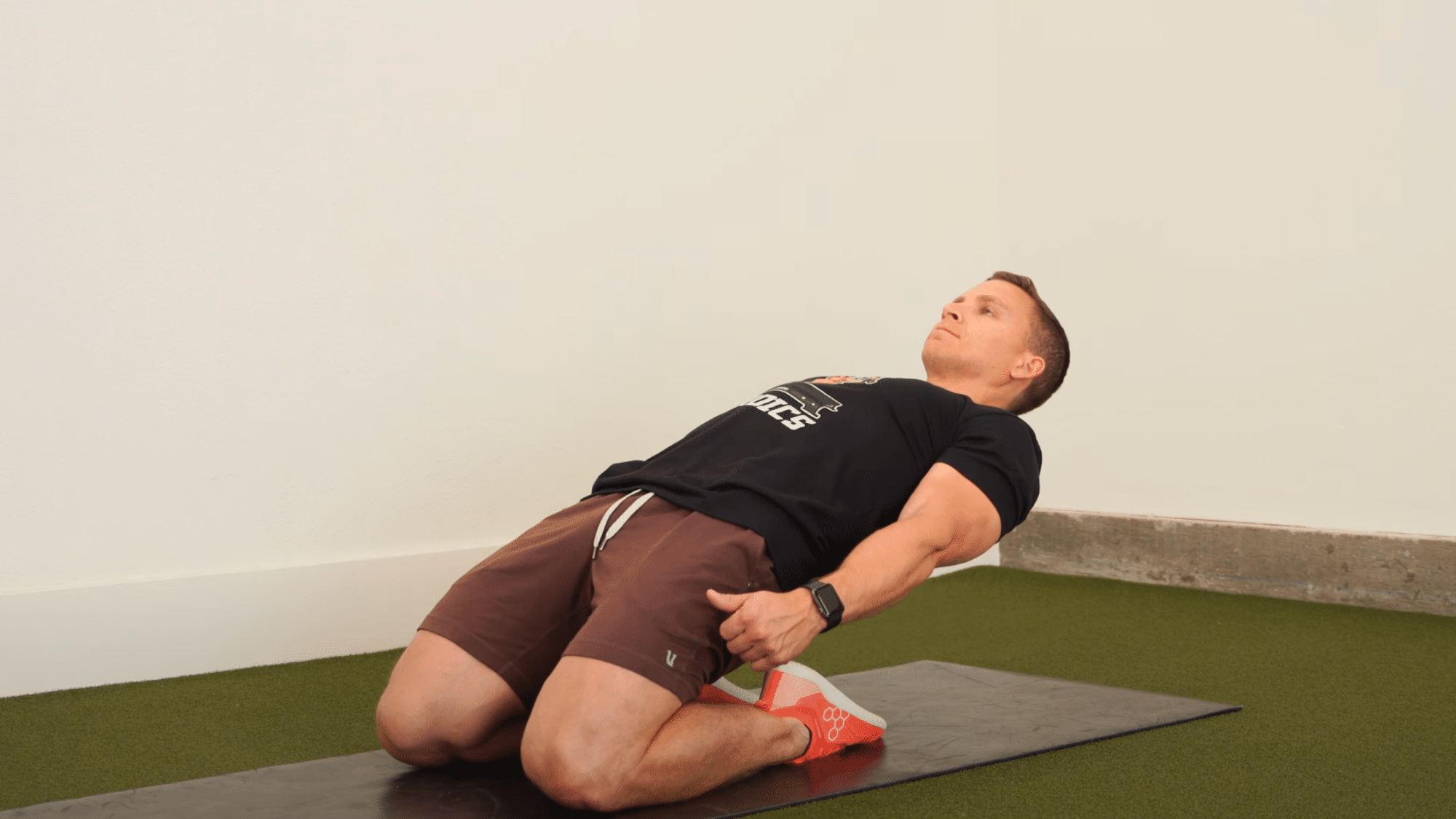Ever feel like your quads are the weakest link in your lower body? I get it, mine used to be too. That’s when I found out the reverse Nordic curl, and honestly, it changed everything.
This isn’t your typical gym exercise that everyone’s doing, but trust me, it should be.
If you’re tired of the same old squats and lunges and want something that’ll actually challenge your quads while protecting your knees, you’re in the right place.
Let me show you exactly how to master this game-changing movement, step by step.
What is a Reverse Nordic Curl?
Let’s clear up any confusion right from the start. You may have heard of the regular Nordic curl, which involves kneeling and lowering your body forward to target your hamstrings.
The reverse Nordic curl is basically the opposite movement, and it’s all about your quads.
Here’s the deal: instead of falling forward, you lean backward while keeping your body straight from your head to your knees. It sounds simple, but trust me, your quads will be screaming.
What muscles are we working here?
- Quadriceps: These are the stars of the show, all four muscles on the front of your thigh
- Hip Flexors: They help stabilize your hips during the movement
- Core Stabilizers: Your abs and lower back work overtime to keep you steady
The beauty of this exercise lies in its benefits for knee health. By strengthening your quads through this full range of motion, you’re essentially bulletproofing your knees against injury.
Plus, if you’re into sports that involve running, jumping, or quick direction changes, stronger quads from reverse Nordic curls will definitely show up in your performance.
Benefits of the Reverse Nordic Curl
The reverse Nordic curl is a game-changing bodyweight exercise that targets your quadriceps in a way that few other movements can match.
Controlling your body as you lean back builds eccentric strength, improving performance and injury resilience.
| Benefit | Why It Matters |
|---|---|
| Stronger Quads | Targets quads uniquely by working them as they lengthen and contract, building deep, functional strength. |
| Knee-Friendly | Improves knee stability and mobility, making it great for countering stiffness caused by sitting or tight hips. |
| Balanced Muscles | Pairs with regular Nordic curls to train both quads and hamstrings for better leg function. |
| Injury Prevention | Builds strength that protects against strains and boosts performance in running, jumping, and daily movement. |
| Functional Strength | Develops real-world usable strength that goes beyond just gym training. |
Start incorporating reverse Nordic curls into your routine 2-3 times per week, beginning with small ranges of motion and gradually increasing depth as your strength improves.
Step-by-Step Guide: Performing the Reverse Nordic Curl
Alright, let’s break this down step by step. Don’t worry if it feels awkward at first; that’s totally normal.
Step 1: Get into Your Kneeling Position

Start by kneeling on your soft surface with your knees about hip-width apart. Keep your torso nice and upright, and give your glutes a gentle squeeze, not a death grip, just enough to engage them.
Place the tops of your feet flat on the ground for stability, almost like anchoring yourself. Keep your core tight, think of gently bracing as if someone were about to poke your stomach.
Step 2: Nail Your Body Alignment

This is crucial. Keep your spine in a neutral position, let your shoulders relax, and imagine a straight line running from the top of your head down to your knees. This line should stay straight throughout the entire movement.
Tuck your chin slightly to avoid overarching your neck, and keep your ribs from flaring forward. Alignment is your safety net; it ensures your quads and not your lower back do the work.
Step 3: The Execution

Slowly start leaning backward, keeping that straight line from head to knees intact. This isn’t a hip hinge like a deadlift; you’re literally just tilting your entire body backward as one unit.
Think of yourself as a plank that’s slowly falling backward.
Breathe steadily as you move, exhaling as you lean back to maintain control. Don’t rush; this is all about slow, controlled tension, not speed.
Step 4: How Far Should You Go?

This depends on your flexibility and strength level. Beginners might only go back 15–20 degrees, while more advanced folks can go much further.
Listen to your body; your quads should feel like they’re working hard, but there should be no pain in your knees or lower back. Over time, as strength improves, you’ll naturally extend your range.
Step 5: Coming Back Up

This is where the real work happens. Use your quads to pull yourself back to the starting position. No cheating with momentum or using your arms to swing yourself up. Your quads should do all the heavy lifting.
Think about squeezing your thighs as you rise, almost like they’re pulling you forward. Maintain that straight-line alignment all the way back to an upright position to lock in perfect form.
Here’s a detailed video tutorial on how to do reverse Nordic curls that you can refer to for better understanding:
Common Mistakes and How to Avoid Them
Mastering the reverse Nordic curl requires attention to form and progression. Here are the most common pitfalls that can derail your progress or lead to injury.
- Arching the Lower Back: Keep your spine neutral and core engaged throughout the movement.
- Using Momentum Instead of Control: Focus on slow, deliberate descent and ascent rather than bouncing.
- Letting Knees Slide or Feet Come Loose: Secure your feet with pads, mats, or a stable anchor point.
- Going Too Deep Too Early: Start with small ranges of motion and gradually increase depth as strength builds.
- Rushing the Progression: Build foundational strength before advancing to more challenging variations.
Avoid these mistakes and you’ll develop proper movement patterns that maximize strength gains while keeping your knees happy. Remember, quality reps always beat quantity when it comes to building bulletproof quads.
Reverse Nordic Curl: Progressions and Variations

Building reverse Nordic curl strength is all about smart progression that matches your current ability level. If you’re just starting out or looking to push your limits, these variations will keep you moving forward safely.
1. Beginner Modifications
Perfect your form and build foundational strength with these supportive variations that reduce the load while teaching proper movement patterns.
- Use resistance bands for partial assistance during the descent.
- Limit the range of motion to a comfortable 45-degree angle.
- Perform the movement from an elevated surface, like a bench.
2. Intermediate Variations
Once you’ve mastered the basics, these progressions add challenge while maintaining control and building deeper quad strength.
- Execute a full range of motion reverse Nordic curls.
- Add 3-5 second isometric holds at the bottom position.
- Increase time under tension with slower descent phases.
3. Advanced Progressions
Push your limits with these demanding variations that require exceptional quad strength, control, and body awareness for elite-level development.
- Add external weight using a weighted plate or vest
- Emphasize slow tempo eccentrics with 5+ second descents
- Progress to single-leg variations for unilateral strength building
Remember, the best progression is the one you can execute with perfect form—your future self will thank you for the patience
Programming Reverse Nordic Curls in Your Routine
Programming the reverse Nordic curl effectively can make or break your quad development and overall leg strength gains.
Here’s how to strategically integrate this powerful exercise into your training for maximum results.
| Training Level | Sets X Reps | Workout Placement | Complementary Exercises | Rest Periods | Recovery Focus |
|---|---|---|---|---|---|
| Beginner | 2-3 x 3-5 | After main lifts, before accessories | Nordic curls, goblet squats, wall sits | 2-3 minutes | 48-72 hours between sessions |
| Intermediate | 3-4 x 5-8 | Mid-workout or as a superset | Bulgarian splits, RDLs, front squats | 2-4 minutes | Active recovery, quad stretching |
| Advanced | 3-5 x 6-12 | Various placements for periodization | Weighted nordics, pistol squats, jump squats | 3-5 minutes | Foam rolling, mobility work |
Progression Strategy: Increase range of motion first, then add reps, followed by additional sets, and finally external load for advanced trainees. Start conservatively with frequency and volume, then gradually increase as your quads adapt to this demanding movement pattern.
Final Thoughts
I’ve shown you how the reverse Nordic curl can strengthen your quads when executed with proper setup, form, and smart progression.
The key is starting controlled and gradually increasing difficulty as your body adapts. This isn’t just another exercise; it’s a tool for building bulletproof knees and functional leg strength that carries over to everything you do.
Pair reverse Nordic curls with regular Nordic curls, squats, and Romanian deadlifts for a complete lower-body program that builds both strength and resilience.
What’s your biggest challenge with quad-dominant exercises? Drop a comment below and let’s discuss how to overcome it together!





